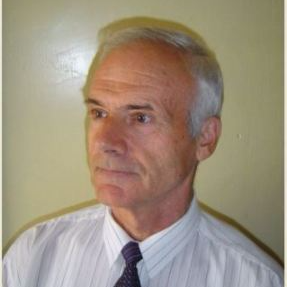Organometallic Catalysis in Organic Synthesis
A special issue of Molecules (ISSN 1420-3049). This special issue belongs to the section "Organometallic Chemistry".
Deadline for manuscript submissions: closed (28 August 2018) | Viewed by 41542
Special Issue Editors
Interests: macromolecular chemistry; organometallic synthesis; homogeneous catalysis; carbon-carbon bond formation; ruthenium-arene complexes
Special Issues, Collections and Topics in MDPI journals
Interests: transition metals complexes and their chemistry and use in homogeneous catalysis and polymer synthesis; Ru-catalyzed olefin metathesis; metathesis driven syntheses of some bioactive compounds and metathesis-related processes; stable nitroxide free radicals and their preparation and multifarious applications using ESR
Special Issues, Collections and Topics in MDPI journals
Interests: organic chemistry; organic synthesis; organometallic chemistry; coordination complexes; catalysis; free radicals; metathesis chemistry; polymerization chemistry
Special Issues, Collections and Topics in MDPI journals
Special Issue Information
Dear Colleagues,
Catalysis by organometallics is currently of utmost significance in important industries, such as the manufacture of advanced materials, pharmaceuticals, or biomaterials, in petrochemistry, nanotechnology, and in emerging technologies of smart products, catalytic water oxidation, high-tech energy saving, etc. Therefore, this Special Issue aims to illustrate the most recent and pertinent developments on the multiple, innovative uses of organometallics as effective homogeneous and heterogeneous catalysts in a plethora of organic syntheses. Organized, so as to cover new applications of organometallics where metals pertain to the main groups, transition metals or rare earth metals, the contributions will focus on a broad range of organic reactions, such as C-H activation, C-C bond formation, addition, condensation, metathesis, isomerization, oligomerization, hydrogenation and hydrogen transfer, oxidation, epoxidation, hydration, hydroboration, hydrosilylation, hydroxylation, hydroformylation, carbonylation, cyclopropanation, cyclization and related reactions, as well as on their involvement in the synthesis of polycyclic compounds or bioactive natural products. Special attention will be paid to complex catalytic processes, occurring in solution and solid phase, and to tandem or cascade reactions implying organometallics. The key role of the transient organometallic species intervening in the catalytic cycles will also be highlighted.
Communications, full papers and reviews on the abovementioned topics are particularly welcome.
Prof. Dr. Albert Demonceau
Prof. Dr. Ileana Dragutan
Prof. Dr. Valerian Dragutan
Guest Editors
Manuscript Submission Information
Manuscripts should be submitted online at www.mdpi.com by registering and logging in to this website. Once you are registered, click here to go to the submission form. Manuscripts can be submitted until the deadline. All submissions that pass pre-check are peer-reviewed. Accepted papers will be published continuously in the journal (as soon as accepted) and will be listed together on the special issue website. Research articles, review articles as well as short communications are invited. For planned papers, a title and short abstract (about 100 words) can be sent to the Editorial Office for announcement on this website.
Submitted manuscripts should not have been published previously, nor be under consideration for publication elsewhere (except conference proceedings papers). All manuscripts are thoroughly refereed through a single-blind peer-review process. A guide for authors and other relevant information for submission of manuscripts is available on the Instructions for Authors page. Molecules is an international peer-reviewed open access semimonthly journal published by MDPI.
Please visit the Instructions for Authors page before submitting a manuscript. The Article Processing Charge (APC) for publication in this open access journal is 2700 CHF (Swiss Francs). Submitted papers should be well formatted and use good English. Authors may use MDPI's English editing service prior to publication or during author revisions.
Keywords
- homogeneous catalysis
- heterogeneous catalysis
- new synthetic methods
- enantioselective synthesis
- organic synthesis
- green chemistry
- energy saving
- sustainable development
- physical methods
- computational chemistry
- mechanistic studies
- industrial applications








